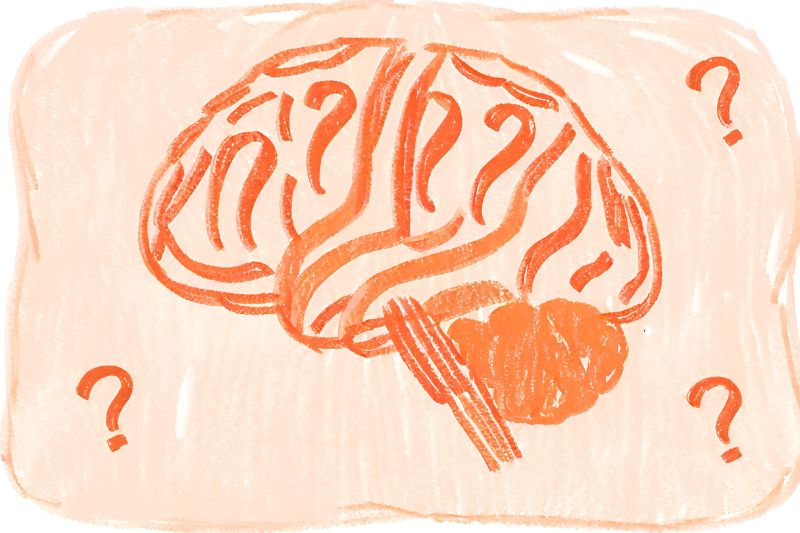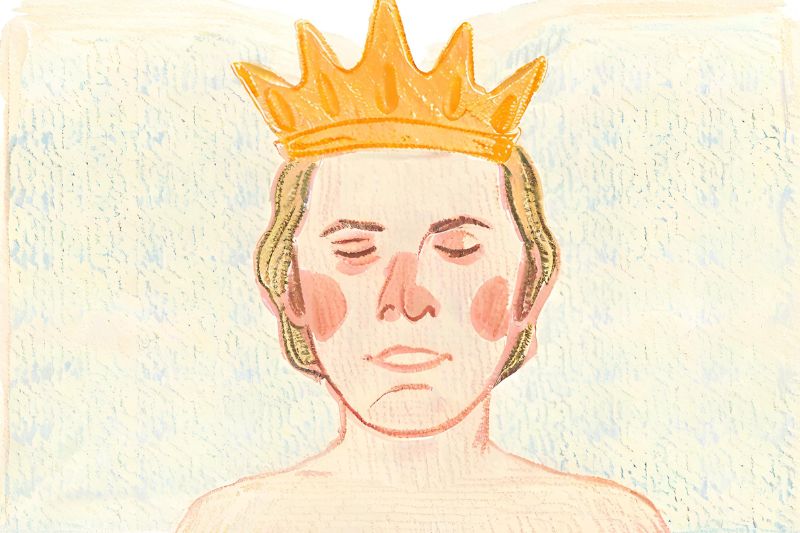What Types of Therapy Are Commonly Used for Anxiety Disorders?
Therapy is one of the most effective treatments for anxiety. Whether used alone, or combined with medication, it can make a huge difference to the way you think, feel and act. Let's explore the various therapeutic approaches that are commonly used to treat anxiety.

- What is therapy?
- What is anxiety?
- Types of therapy used to treat anxiety
- Cognitive behavioural therapy (CBT)
- Exposure therapy
- Counselling
- Humanistic therapy
- Eye movement desensitisation and reprocessing (EMDR)
- Psychodynamic therapy
- Acceptance and commitment therapy (ACT)
- Dialectical behaviour therapy (DBT)
- Hypnotherapy
- Getting treatment for anxiety
Therapy is one of the most effective treatments for anxiety. Whether used alone, or combined with medication, it can make a huge difference to the way you think, feel and act. The process of opening up about your emotions and discussing your thoughts with another person is incredibly powerful in itself. When you add to this the invaluable guidance of a professional therapist, you pave the way to being able to successfully manage your symptoms and maybe even overcome them altogether.
In this article, ManageMinds covers what therapy involves and explores the various therapeutic approaches that are commonly used to treat anxiety.
What is therapy?
In basic terms, therapy refers to a form of treatment that involves a therapist and their client talking through any negative thoughts, feelings, unhelpful beliefs or problematic behaviours that are affecting the latter’s general wellbeing. The aim of this process is to help the client find a solution to these issues, or at least learn how to manage them in a healthier way.
Therapy is used to treat a variety of psychological and emotional problems. It can take place in person, over the phone, or via online video call. You may also hear therapy referred to as psychotherapy or counselling.
What is anxiety?
Anxiety is an umbrella term for a number of conditions that cause a person to experience strong feelings of fear, dread and uncertainty. These include:
- Generalised anxiety disorder (GAD)
- Post-traumatic stress disorder (PTSD)
- Panic disorder
- Social anxiety disorder
- Phobias
- Obsessive-compulsive disorder (OCD)
Anxiety can present differently in each individual and may also cause physical ailments like IBS and headaches. Common symptoms of anxiety are intense nervousness, difficulty concentrating, fatigue and restlessness. It's useful to note that, in small doses, these symptoms are not necessarily a sign of something bad. Many psychologists accept that there is a positive side to anxiety.
Types of therapy used to treat anxiety
Therapy emerged as one of the most common treatments for anxiety in the 1900s. Today, there are a range of different approaches to therapy, and a number of models have proven effective in the treatment of anxiety. Unlike medication, therapy will often address more than just the symptoms of a person’s anxiety. In many cases, therapists will encourage clients to explore the root cause of their anxiety, or at least develop an understanding of the internal reasoning that is fuelling their anxious thoughts and behaviours.
Let’s take a closer look at types of therapy that are commonly prescribed to treat anxiety…
Cognitive behavioural therapy (CBT)

One of the most well-known types of therapy is CBT, or cognitive behavioural therapy. This approach encourages people to understand the relationship between their thoughts, feelings and actions. It is based on the notion that our thought processes, rather than external factors, dictate the way we feel. In other words, our perception of a situation has a much bigger influence on our emotions and behaviour than the situation itself.
The aim of CBT is to challenge negative or unhelpful thoughts and restructure cognitive patterns. This type of therapy is often carried out according to a specific framework. The therapist will help the client to set specific goals, and the client will be expected to work on these in their free time between sessions.
For example, a therapist is working with a client whose health anxiety means that every time they experience stomach pain, they assume they have cancer. Eventually, even a twinge of discomfort is enough to trigger their anxiety symptoms. By examining the thought processes that fuel this unhealthy assumption, the therapist can break them down and encourage the client to replace them with something more realistic and less anxiety-inducing. This could be a thought as simple as: “Maybe I didn’t chew my food properly”, or even “Stomach discomfort is normal—I’m sure it will pass.”
CBT is the most common therapy used to treat anxiety in the UK and it is available through the NHS (though you can expect a very lengthy waiting time).
Exposure therapy
Exposure therapy addresses the fear and avoidance aspects of anxiety, which makes it particularly suitable for those dealing with a phobia. It involves the client gradually being exposed to increasingly triggering versions of the thing they fear or wish to avoid.
A person with arachnophobia, for example, may start out being encouraged to look at a picture of a spider, and eventually build up the confidence to hold one. Someone receiving exposure therapy for social anxiety may begin by shopping in a quiet supermarket, and work up to having a conversation with a stranger in a busy shopping centre.
The logic behind this approach is that repeated exposure to the feared stimuli:
- Reduces the intensity of anxious reactions
- Breaks patterns of avoidance
- Encourages the person to unlearn negative beliefs about the subject
- Makes the client feel empowered because they realise they can face their fear
There are various offshoots of exposure therapy that are suitable for different anxiety disorders. People with PTSD may be advised to try prolonged exposure therapy or narrative exposure therapy. The former involves gradually but repeatedly accessing trauma-related memories until they no longer wield such power over a person’s emotions. The latter follows a similar pattern but then focuses on encouraging the individual to establish a new life narrative that is not centred around trauma.
Counselling
Nowadays, ‘counselling’ is used as a generic term for all kinds of talking therapy, but it is actually a form of therapy in its own right. The thing that separates this approach from most other types of therapy is the dynamic between the counsellor and client.
In counselling, the therapist plays a supportive role, rather than that of an expert passing on skills and knowledge. They encourage you to talk, and may even gently guide your train of thought at times, but they are not there to give advice. Instead, the aim of counselling is to allow the client to find their own solutions.
The benefits of discussing your problems out loud makes counselling an effective treatment for a lot of people. However, it may not be suitable for those experiencing severe levels of anxiety and depression, as these cases often require more active help.
It’s important to be aware that, in the UK, anyone can call themselves a therapist or counsellor—regardless of qualifications. It is therefore important that you do your research before devoting your money and time to these services. Look for individuals with legitimate qualifications who are linked to (or have the approval of) accredited organisations.
Humanistic therapy
The humanistic approach to therapy, which includes person-centred therapy, shares many traits of counselling. The therapist guides rather than advises the client, and it is expected that the latter will do the majority of talking during sessions. It focuses on the individual as a whole being, considering both their past and present experiences.
The humanistic model is based on the idea of self-actualisation. This is the view that people have all the answers they need within themselves, and so should be trusted to come up with their own solutions to their problems. The therapist’s job is to offer empathetic understanding—listening intently to what the client says, without judgement, and summarising it back to them so they can make sense of their thoughts and feelings.
This therapy style can be effective for those experiencing anxiety as it helps to increase self esteem and facilitates personal growth. Some clients also appreciate the level of control they have over what each session covers. As is the case with counselling, though, people with complex forms of anxiety may find that the humanistic style does not adequately address their needs.
Eye movement desensitisation and reprocessing (EMDR)

EMDR therapy is designed to help individuals reprocess traumatic memories that lie at the root of their anxiety symptoms. As it involves dissecting traumatic memories in great detail, it is particularly useful for treating people with PTSD.
To reduce the distress levels caused by recalling a traumatic memory, the therapist will get the client to move their eyes from side to side, listen to particular sounds or receive gentle taps to the body. These actions engage both sides of the brain, a technique that is known as bilateral stimulation.
It is thought that bilateral simulation weakens the intensity of negative emotions, enabling people to access thoughts or memories that usually cause them great distress. When this state is reached, the therapist will guide the client to reframe the traumatic memory in a way that is not so triggering. EMDR is an example of a therapy that really explores the root causes behind anxiety.
Psychodynamic therapy
Utilising the theories of the father of psychoanalysis, Sigmund Freud, psychodynamic therapy is based on the notion that a lot of our emotions and behaviours are the result of unconscious beliefs that we form in childhood and early adolescence. The client will be encouraged to do a lot of self-examination until recurring patterns of thought or behaviour are identified. The aim of the therapy is to bring unconscious beliefs into the conscious, so that they can be reframed in a more neutral or positive way.
For psychodynamic therapy to be successful, a solid, trusting relationship must be established between therapist and client. This therapy often requires clients to delve into uncomfortable childhood experiences and transfer their negative feelings onto the therapist in order to reveal unresolved conflicts that are causing distress in the present. Techniques such as free association, dream interpretation and Rorschach inkblots may also be used.
Acceptance and commitment therapy (ACT)
Acceptance and commitment therapy is one of the so-called “third wave” therapies. This refers to a group of more recent psychotherapy models that incorporate mindfulness and take a slightly different stance to traditional forms of CBT.
Rather than combating negative thoughts and emotions, during ACT, the client is taught to acknowledge their feelings as appropriate responses to their life experiences. This allows them to accept their intense emotions for what they are, rather than viewing them as a sign of weakness or failure that needs to be fixed.
When a person adopts this perspective, they are considered to have expanded their ‘psychological flexibility’. Once this state is reached, the therapist moves on to an action-oriented framework that involves the client committing to certain behaviour changes that should improve their wellbeing. Through this process ACT also aims to increase a client’s self-confidence and optimism.
Dialectical behaviour therapy (DBT)
Another third wave therapy, DBT was originally used as a treatment for people with borderline personality disorder. However, as it has proven effective in helping those who feel emotions very intensely, its use has expanded to address conditions like depression and anxiety. Just like ACT, it integrates many elements of CBT, but with an emphasis on mindfulness skills.
It is called dialectical because at its core it combines two seemingly opposing objectives: acceptance and change. Clients are guided to take a non-judgemental approach to both their inner thoughts and their surroundings. There is also a heavy emphasis on regulating strong emotions through techniques like distress tolerance, which employs tactics like distraction and self-soothing to help people cope with intense feelings.
As well as accepting that their thoughts and feelings are valid, clients are encouraged to improve communication and relationship skills in an effort to enhance their wider life experiences. To achieve this, DBT often involves an element of group work.
DBT is usually carried out in 4 stages, starting by addressing a client’s most destructive behaviours, and tackling the rest in order of how much they impact the person’s life. The final stage involves adopting positive behaviours to improve quality of life.
Hypnotherapy

A therapy that is particularly suited to phobias and mild to moderate forms of panic disorder is hypnotherapy. This involves a therapist guiding their client into a relaxed state that makes them more focused and open to suggestion. Once this has been achieved, the therapist can then explore problematic behaviours and thought patterns and help the client to examine and, ultimately, change them. In some cases, the therapist may also use this opportunity to try to access the underlying cause of the client’s anxiety.
Hypnotherapy is a useful technique in the sense that it is usually easier for a person to discuss distressing issues in this calm, controlled environment. However, for it to work, the client must be open to being put into a state of hypnosis. This requires a fair amount of trust, so a strong therapist-client relationship is essential for this type of therapy.
Getting treatment for anxiety
Therapy is one of the most commonly used and effective ways to treat anxiety. The fact that there are so many different types of therapy means that you are likely to find at least one approach that works for your particular needs. This article covers the main forms of therapy used to treat anxiety, but there are numerous variations out there. Many modern psychotherapy models will combine elements of existing therapies to form a new framework.
Whatever therapy you decide to go for, it is important to ensure that you are in capable hands. Not all therapists are created equal, and you should do your research before committing to a particular individual.
At ManageMinds, we’ve done this legwork for you. Our hand-picked selection of therapists are qualified in a range of different therapeutic approaches, belong to a professional counselling and therapy body and have many years of experience treating anxiety. To be matched with a therapist and start managing your anxiety, simply book an appointment via our website.
For information on the potential benefits of therapy, check out 3 reasons you should start therapy.
Post Date:
Author: Isobel Robb
Explore More Articles
3 Mental Health Myths Your Therapist Is Sick of Hearing
It's great that more people are talking about mental health, but not everything you hear is necessarily true. Don't fall for these 3 mental health myths!
Feeling Worried? Challenge Anxious Thoughts with These Simple Questions
Stuck in a spiral of anxious thoughts? Use these 3 simple questions to challenge negative thinking and adopt a healthier mindset.
ManageMinds Explains... Narcissists
Even wondered if you or someone you know may be a narcissist? In this guide we cover what narcissistic personality disorder is, as well as the signs you need to watch out for.


